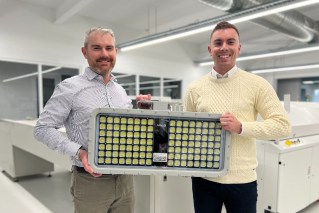
Deep datasets push South Australia to AI frontline of predictive health
A wealth of continuous data, and the networked expertise to crunch it, has enabled South Australia to be at the forefront of AI research in preventative health.

A group of research labs in Adelaide, South Australia has recently begun using a wealth of health data provided by SA Pathology to determine ways to use Artificial intelligence (AI) to identify health issues in high-risk patients before they happen.
Based at the Royal Adelaide Hospital, SA Pathology has teamed with the Australian Institute for Machine Learning (AIML) and the MIT bigdata Living Lab at Lot Fourteen innovation precinct, as well as the Australian Research Centre for Interactive and Virtual Environments at the University of South Australia.
Since teaming up in July, they have been developing new systems based around AI for preventative care and other health industry issues.
SA Pathology anticipates using AI will improve preventative health care, speed up some manual, time-consuming tasks and lower costs to deliver better public health outcomes.
Dr Zhibin Liao, a machine learning researcher with AIML, is among the team working with SA Pathology to determine how machine learning can work in preventative healthcare.
Dr Liao said one of the benefits of working with SA Pathology is that the organisation has a rich, globally unique data set, having performed more than 42 million tests in the past three financial years that compliments more than 80 years of historical pathology data.
“They have data for many years, so we can analyse population data over a long period. And it’s continuous, unless people move interstate,” Dr Liao said.
“We can look at blood tests that show early signs of pre-diabetes, and if there are patterns and trends in certain geographic hotspots, it means doctors in those areas can get an early warning about what to focus on.”
Using AI in pathology, software can be built to alert doctors when their patients are forgetting to get their important tests, or if a patient is at higher risk of requiring hospitalisation in future.
“If you can do a GP visit, and find the problem earlier, for the patient it’s much better to prevent them being hospitalised,” Dr Liao said.
SA Pathology interim executive director, Lucas Semmler, said the organisation is looking at three key areas: clinical decision making, disease surveillance and population health management to drive improved outcomes for the population.
“We know there are unnecessary hospitalisations, through compliance or chronic diseases or how patients manage their own health and how they are managed within the GP sector,” Semmler said.
“It’s about leveraging that and how we can assist in that space to reduce the overall burden on the health system.
“There’s significant information within the pathology sector, and the broader health sector as well, where applying AI is going to be critical to meeting the needs of the time and actually addressing key issues early.”
Semmler said AI technology is going to “become part of the everyday, normal workload and work practices in the future”.
“There’s always going to be a scientist or a pathologist in the background, because AI will only take you to a certain level, but there are significant volumes of data to go through,” Semmler said.
“We are working across the public health sector, as well as partnering with GPs in the primary health care system, to look at where pathology in the context of the broader health sector can drive some of those improvements to the state and delivery of services.”
Ranked as number two in the world for computer vision, the Australian Institute for Machine Learning, which is part of the University of Adelaide, is working with the MIT bigdata Living Lab to ensure the project is delivered with world’s best practice for privacy, data security and ethics in AI. Both research labs are based in the innovation district of Lot Fourteen in the heart of Adelaide.
AIML’s on-site engineers are also researching ways to improve digital pathology services. Efficiencies here would save pathologists time, deliver test results faster and at a lower cost.
One of these efficiencies is in cell counting, a time-consuming task for pathologists. Researchers will use a deep learning network to capture pathologists’ annotations to learn how to trace each cell in an image.
“The aim is to reduce the time pathologists need to work on pathology images. Cell counting, it’s a pathology test to count the number of cells of interest in a sample, but it’s very time consuming,” Dr Liao said.”
“So, if a machine learning algorithm could accurately count them faster than a human, that would save a lot of time.”

















